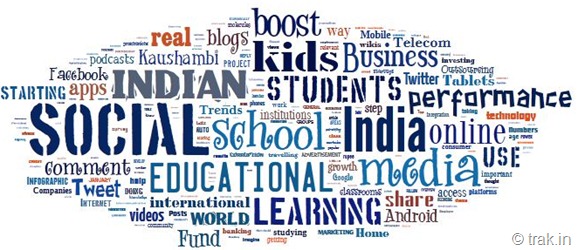5 ways to integrate social media in schools in India!
From placing projectors and screens in each classroom, many schools in India have taken one step ahead to allow children to use social media in schools, much to spark a controversy and debate over its fairness. Whilst educators fight over the relevance of social media in education, we take a look at the positivity and practicality it can bring into everyday classroom learning.

Contents [hide]
Gone are the days when students were expected to check notice boards in the corridors for the next cricket match, a parent teacher meeting or the menu in the canteen. Facebook, Twitter, Google Docs, internal Collaboration tools are great, practical and fun-to-use ways of sharing the next set of deadlines of assignments or the list of student grades with the whole class at the same time.
There are thousands of social media applications that students could use for educational purposes. Teachers can ask students to use educational apps that can help them in a range of subjects such as identifying species of trees to exploring the universe to increasing vocabulary to learning basic math principles. There are thousands of such interactive free and paid apps that schools can utilize for education. Teachers can even grade students on making original wiki or blog entries and therefore helping them in understanding the implications and protocols of internet research.
Let’s say that a management committee of a school is planning an event. Do you think they are going to ask all the 2000+ students about their feedback or suggestions? But with social media, this is possible. The minute students get an update about a new event being planned in school, they can all participate in appointing coordinators, finalizing details of the event, delegating responsibilities and much more. Thousands of students can respond instantly. This is a great way of practical learning!
We understand that teachers are under immense pressure to complete the term’s syllabus and may not have the time to create activities that purely focus on involving social media. In such cases, social media can become a great way of sharing knowledge outside of classroom hours. Imagine a geography teacher posting a YouTube video of The Seven Wonders of the world and asking students to research a para about each of them during vacations. Imagine a chemistry teacher grading students on a Facebook quiz on alkaline chemicals she/he uploaded over the weekend. Or an art teacher asking students to attend an event in the city. As you can see, the sky is the limit.
Social media for internships and exchange programs
Many schools are taking up the task of conducting selections for foreign exchange programs on social communities of the school. Students get to discuss many elements of the syllabus, further study opportunities and other aspects of life with the school of the foreign country that the school has collaborated with. Schools can also allow students of Standard 10 onwards to use LinkedIn and other such recruitment related websites to scout for internships and connect with professionals of the industry that they aspire to be in after a few years.
Social media is only going to get more advanced and complex by the day. Banning and restricting it is only going to make things in the classroom worse. The reason why we list only positive attributes of social media is because we recommend teachers to embrace and accept it. Keep up with the times, or perish, as they correctly say.
What is your opinion?
